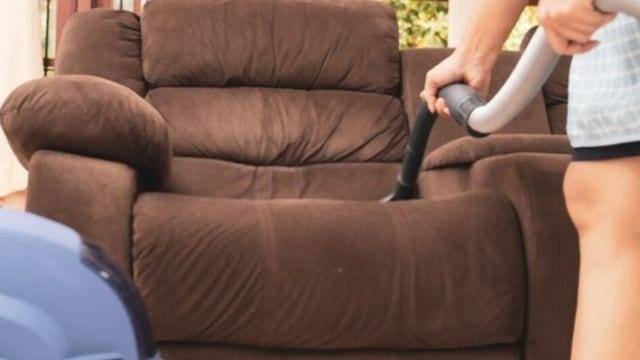
Disclosure: This site is reader-supported & contains affiliate links. We may earn a commission through products purchased using links on this page. Learn more
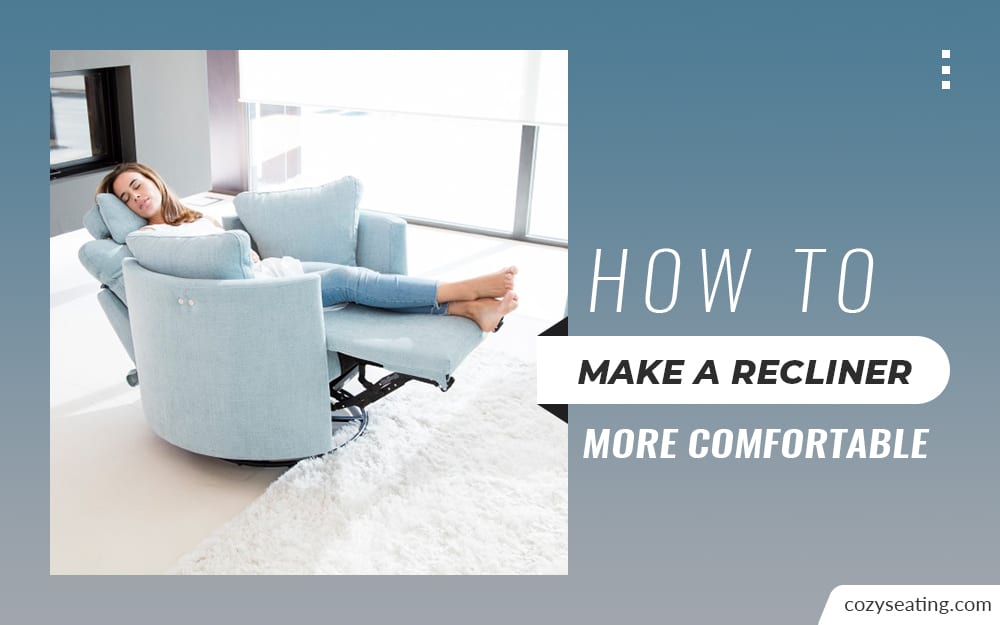
Recliners are comfortable 24/7. Wrong! Recliners can lose their comfort due to various reasons. For example, worn-out cushions, too low or too high armrests, tension springs being too tight or loose, and lack of a footrest.
Thankfully, I’ll also show you how to make a recliner more comfortable, step-by-step.
Your recliner is uncomfortable because of bad padding. Put a new cushion, raise the armrests, or align lumbar support to make the recliner more comfortable. You can also fix an uncomfortable recliner by replacing tension springs, adjusting the tension, changing its pitch, or adding a footrest.
But before we get to know how to make your recliner comfortable, let’s see why your classy recliner would become uncomfortable.
Shall we?
Table of Contents
Why Is My Recliner So Uncomfortable?
Recliners are designed with a high level of professionalism to offer long-lasting comfort to the user. Unfortunately, this isn’t always the case. A worn-out cushion, bad tension, and a poorly aligned lumbar support are among the reasons why your recliner is so uncomfortable.
Worn Out Cushion
If you’ve been using your recliner for a number of years, probably a decade, you shouldn’t be surprised that it has suddenly become uncomfy.
Seating on your recliner every day for more than five years could wear the cushion, consequently making it feel uncomfy.
Bad Tension
When tension springs get worn out, your recliner tension becomes loose. Resultantly, your recliner becomes so uncomfortable.
Also, if the springs are too tight, the recliner suddenly becomes uncomfortable.
Bad Lumbar Support
Your recliner’s lumbar support could be worn out due to constant use of the chair. When it does, it stops supporting your back entirely.
As a result, your back lacks sufficient support, thereby making you uncomfy. Worst still, you may experience lower back pains which could become severe over time.
Worn Out Tension Springs
Old and worn-out tension springs make your recliner uncomfortable. You can tell tension springs are worn-out if, every time you sit on your recliner, you sink drastically or feel lumps on the seat. Sagging areas on your seat is another indication tension springs are worn-out.
Old Recliner: How Can I Make My Recliner More Comfortable?
Now that you know why your recliner has suddenly turned into a ‘monster’ that won’t give you the desired comfort, is it over? Should you be getting ready to get a new recliner?
Hold your breath, you don’t need to budget for a new recliner if you’re not financially stable at the moment. (Have a look at the best budget recliners)
Keep reading to learn how to solve this problem.
Tip #1: Replace The Seat Cushion
It wouldn’t be necessary to spend lots of money on getting a new recliner if the only issue is a worn-out cushion. You can make your recliner more comfortable by replacing the old worn-out cushion with a new, top-quality one. After all, this is also a cheaper alternative. Getting a new cushion for your recliner is specifically helpful if the old cushion is completely worn-out, and staffing it would cost more than replacing it.
Simply ask your cushion maker to use top-quality material when making your new cushion so that it can last many years.
Furthermore? We have put together a handy guide for finding your most comfortable recliner.
How To Replace Recliner Seat Cushion
You can replace recliner seat cushion by removing the old foam and having a new cushion. This process takes less than 3 minutes, especially if your recliner cushion has a zipper. However, even without a zipper, this is an easy-to-do task, as I’ll show below.
You’ll, however, need a few tools to get the task completely done.
They include:
- Tape measure
- Seam zipper or utility knife
- Needle
- Thread
- New (strong) foam
Here’s a step-by-step guide on how to replace recliner seat cushion.
- Start by measuring the current recliner cushion. You need to remove it from the recliner to do so. Also, for accurate measurement, measure the cushion corners to get the right thickness.
- Measure the widest points of your recliner cushion. This should be front to back and side to side of your recliner cushion. The dimensions you get should be the accurate size for your upholstery foam.
- It’s time to remove the old worn-out foam. So, open the zipper (if there’s one). You can check the back of the cushion to see if it’s there. A zipper is ideal as it simplifies the task. If it’s sewed, no need to fret.
Use a seam ripper to cut the stitches. Be careful lest you cut the material you’ll stitch back. No seam ripper? It’s okay—use a utility knife.
- Proceed by slipping in the new foam. Ensure it’s correctly slipped in before closing the zipper or sewing back. If you’re sewing, it’s best to do it professionally by using the blind stitching method.
Tip #2: Adjust Or Add A Footrest
A footrest plays a vital role in making your recliner comfortable. If your legs lack enough support, your entire body may feel uncomfy. That’s a sign that you need to adjust the footrest. (Check how to adjust the recliner footrest here.)
Unfortunately, some recliners don’t have a footrest. You can purchase one as an add-on. Most of them are affordable and are easy to install.
If you don’t have enough money to buy a modern recliner, you don’t have to bite your lips, simply modify one.
If you have a step stool or piece of styrofoam, make your own footrest depending on the height of your legs. A cardboard box can also work as a footrest.
Tip #3: Align Lumbar Support
A poorly aligned lumbar could not only make you uncomfortable when seating on your recliner, but it could also be the beginning of constant hospital appointments due to backaches. It’s, therefore, not an option—you need to correctly align the lumbar of your recliner to feel comfy.
So, how do you align lumbar support? You align lumbar support by adjusting it so that it takes your back’s natural curve. This is the curve that is slightly above your waistline. This makes your back fit right in the lumbar, thereby making you comfy.
Thanks to modern recliners, you can align the lumbar support while you’re still seated until your back get’s the necessary support.
If the problem persists after correctly aligning the lumbar support, consider buying a lumbar support cushion.
Depending on your preferences, you may buy a lumbar support cushion that looks like a long pillow. This type has straps that you can attach to your body to fit comfortably in your recliner. The cushion fits accurately behind your back and may be ideal for people who have trouble maintaining a good posture.
Else, get a foam block lumbar support cushion. This features a cut-out, which moves all the way to the back of your recliner. Whichever works for you, your aim is to use what makes your recliner comfortable.
Wants more? Below are our compiled lists.
5 Most Comfortable Recliner to Sleep In
10 Best Ergonomic Recliner Chairs
Tip #3: Tension Springs
For an old recliner, you need to ensure that the tension springs are replaced. The perfect timing for tension springs replacement is when they start to become hard. When they become hard, it becomes challenging to adjust the recliner tension, thereby making you uncomfortable.
It’s nothing much to worry about because it’s pretty easy to adjust spring tension. This guide has a simple detailed guide on how to adjust the tension spring.
It’s advisable to routinely check the tension springs to have a long-lasting comfy recliner.
Tips #4: Change Recliner Pitch
Adjusting the pitch of your recliner could drastically affect the comfort of your recliner positively. The position of your feet when you sit on your recliner determines how to adjust the recliner pitch for maximum comfort.
Take, for example, when your feet feel like they’re above the floor when you sit, you may have to adjust the pitch up-way. The opposite works well if, when you sit, your feet don’t touch the floor.
But how to do this? Check out this detailed article on how to adjust the pitch tension.
New Recliner: How Do You Fix An Uncomfortable Recliner?
Even new, top-notch recliners become uncomfortable if you haven’t correctly adjusted all the necessary parts. So, before you think of returning or asking for a replacement, fix an uncomfortable recliner by adjusting the armrests as well as the recliner backrest. Does this sound like Greek to you?
No trouble, I’ll discuss in detail below. Beware, though, the following issues may equally affect old recliners.
Tip #1: Adjust the Armrests
If you just bought a new recliner, it’s likely that you’re not familiar with the correct adjustment of the armrests. General thumb, though, you may raise them if they feel too sunken or lower them if they make your shoulders feel too high.
Even so, how to adjust the armrest height totally depends on the type of your recliner. Therefore, refer to the manual and try to adjust the height of the armrests in proportion to your height.
Tip #2: Adjust the Recliner
A poorly adjusted recliner would make you feel uncomfortable even when everything else is okay. So, adjust the seat tension, the footrest, the seat depth and height, and the tilt angle.
Each part of your recliner plays a vital role in ensuring that your comfort is uncompromised and that it lasts. Therefore, incorrect adjustment of any of these parts would make you feel uncomfy.
Just in case you’re wondering how to adjust your recliner’s tension, let me touch on it in bits.
How To Adjust Recliner Tension
- To adjust the recliner tension, simply sit and lean back on the backrest and then decrease or increase the tension. Decreasing the tension works best when the backrest isn’t leaning back.
- On the contrary, increasing the recliner backrest tension is advisable if it just flows back when you lean on it.
HINT: If you’re tall or have a high body mass it’s best to increase the tension. It’s the same for dudes who like having a firm recliner. On the contrary, shorter guys and those with a low body mass are more comfortable in their recliners when they decrease the tension. In this case, they’ll need little effort to recline their chair. (Read about the pros and cons of soft and firm recliners.)
- While the footrest is in a closed position, have the back of the recliner in an upright position. To fully expose the underside of the recliner, tilt it in the forward direction. Be careful while doing it.
- Next, have the recliner resting on the front side of its armrests as well as the top of its back. This frees both of your hands so that you’re able to adjust its tension comfortably without the need to involve another person.
- Access the mechanism: You should see wing nuts (or thumb wheels), which you should use to modify the mechanism. These features are on either side (right or left) of the underside of your recliner. It all depends on who manufactured your recliner. Also, depending on the manufacturer, you may locate these features at the end of a bolt, which connects to the recliner tension spring on the other side.
- Rotate the mechanism: Depending on what you see on your recliner (a pair of wing nuts or thumb wheels), turn them clockwise. This increases the tension, and moving them anticlockwise decreases it. If the mechanism isn’t moving when you use your hands, don’t hurt yourself—use pliers.
Be cautious when moving the mechanism. Also, increase the tension bits by bits.
HINT: Adjust the tension on both sides evenly. How? Turn the wheels (or nuts) by a quarter turn on one side of the recliner and do the same on the other side. Repeat the process on both sides (in turns) until the tension is excellent and even.
- Check the recliner tension: You now need to test the recliner tension to know if you need to make any further changes or not. So, have the recliner back to its upright position and sit on it.
Extend the leg rest while you lean back to see if the tension is good. If it is, it’s all done! If not, make a further adjustment.
Do you want more comfort? Learn the best way to adjust your recliner.
What Can I Put On My Recliner To Make It More Comfortable?
What if all else fails? What can you put on your recliner to make it more comfortable? You can add padding to make your recliner more comfortable. Not sure how to go about this? I’m here to help you, so read on.
But before I guide you on the process, there are a few tools you need to arm yourself with:
- Furniture stuffing
- Glue gun
- Screwdriver (flat head) or a needle
- Nose pliers
- Stapler
How Do You Add Padding To A Recliner?
It’s incredibly easy to add padding to your recliner. This guide makes the process even less time-consuming.
Therefore, follow it keenly to add padding to a recliner:
Open the seam: Using the needle, remove all the staples to cautiously open the seam. No needle? Use a screwdriver.
Carefully remove old padding: Gently pull all the old padding to replace it with new, clean padding. Remember, the upholstery could tear. So, be on the lookout while removing it.
Add new padding: Add new padding until you have enough to make your recliner comfy again. Ensure that the padding is even to avoid having some areas being higher than others. Also, it would help to have enough of it so that your recliner won’t feel so hard when you sit.
Seal the Seam: Once you have enough padding to make your recliner comfortable, seal the seam by stapling it back. Even better, use the glue gun to keep the padding in place and give the recliner a classy finish.
Allow the Glue to Dry: Don’t be excited yet and sit on your recliner—give the glue enough time to dry before sitting on the recliner. And boom! Your recliner is ready and much more comfortable than before.
The Parting Shot
Before you conclude that you need to replace your old recliner because it feels a lot more uncomfortable, try to add padding, change the pitch and tension springs, and adjust the lumbar support if necessary.
Also, adjusting or adding a footrest may help make your recliner more comfortable. Replacing the cushion and aligning the lumbar support could also work. There you’re, you now know how to make a recliner more comfortable without necessarily having to buy a new one.
Good luck!
Recommended Reading

How to Remove Stubborn Stains From a Recliner
Tough or old, it has to go! Please get rid of the old or stubborn stains from your precious recliner with our foolproof tricks. Read on.
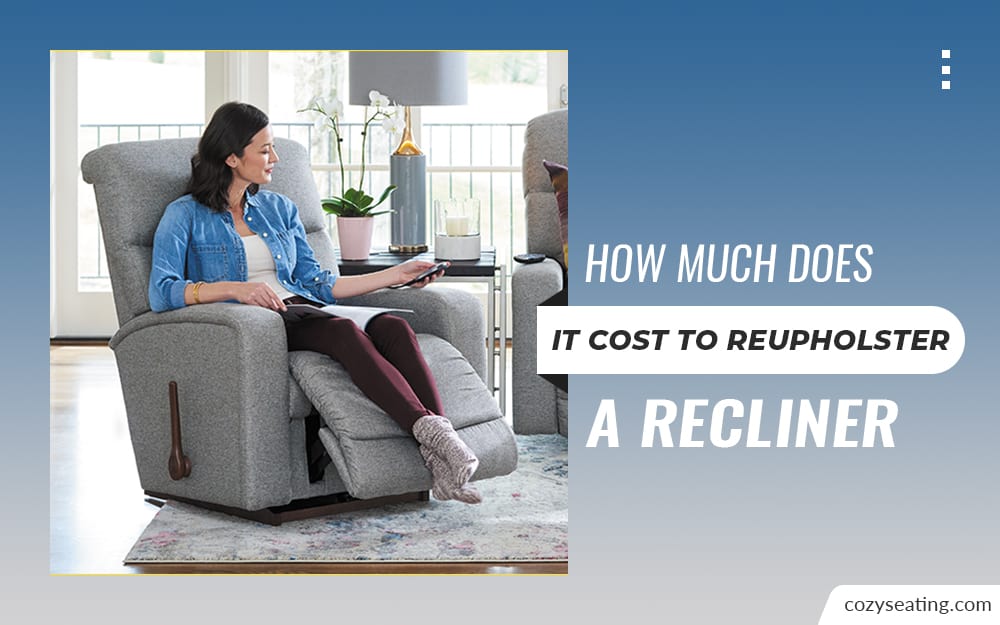
How Much Does it Cost to Reupholster a Recliner?
How much does it cost to reupholster a recliner? I'll walk you through the process step-by-step and give you a ballpark estimate of the cost. So, read on.
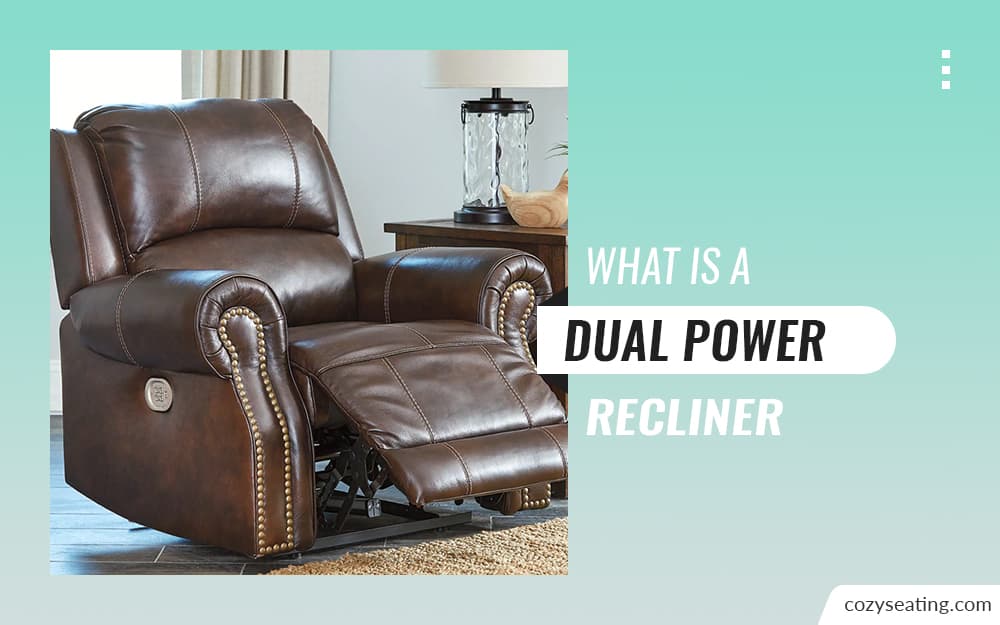
What Is A Dual Power Recliner?
Are you interested in learning about dual power recliners? Here is a comprehensive write-up to get you fully informed and help you make the right buying decision.
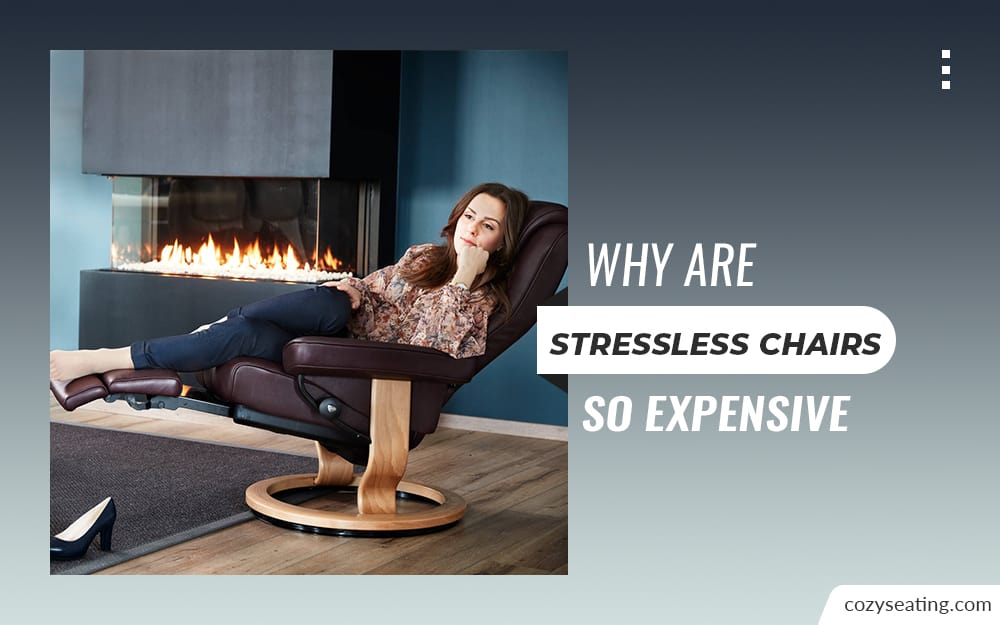
Why Are Stressless Chairs So Expensive?
So, why are stressless chairs so expensive? Durability and ability to customize are among the reasons. Click the link to know more reasons for the high cost.
